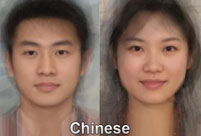 Top 100 beauties in the world!
Top 100 beauties in the world!
 Gallery: Who is the most beautiful one?
Gallery: Who is the most beautiful one?
 If you like autumn, put your hands in the air!
If you like autumn, put your hands in the air!
 Fan Bingbing's "Queen style" in new play
Fan Bingbing's "Queen style" in new play
 Lingerie show at 2014 Miss China
Lingerie show at 2014 Miss China
 J-10 fighters show aerobatic stunts in smog-free sky
J-10 fighters show aerobatic stunts in smog-free sky
 Charming contestants of Shanghai Int’l Model Contest
Charming contestants of Shanghai Int’l Model Contest
 Most amazing chi-pao beauties
Most amazing chi-pao beauties
 7 deadly animal attacks
Russia to launch 70 Proton rockets by 2020: official
7 deadly animal attacks
Russia to launch 70 Proton rockets by 2020: officialBEIJING, Nov. 24 -- China's asymmetric interest rate cuts are set to add difficulties to its commercial banks, which are already facing less profit, increased bad loans and pressures on asset quality, analysts warned.
Starting on Nov. 22, Chinese commercial banks adjusted their deposit and lending rates, the People's Bank of China (PBOC) announced on Friday.
The central bank lowered the one-year benchmark lending rate by 40 basis points to 5.6 percent and the one-year deposit rate by 25 basis points to 2.75 percent.
Meanwhile, the deposit rate ceiling will be raised to 120 percent of benchmark from the previous 110 percent announced in June 2012, the PBOC said.
The asymmetric nature of the rate cuts -- big for lending and small for deposit -- is unusual, HSBC chief China economist Qu Hongbin said in a note.
The smaller cut to the deposit rate will be offset by the upward adjustment to the deposit rate ceiling, Qu said. That means actual deposit rates offered by commercial banks could remain unchanged, at 3.3 percent.
Qu was right. Banks' statements and announcements analyzed by Xinhua showed most commercial banks, especially smaller ones, are using higher deposit rates to attract deposits.
"This will likely further squeeze banks' margins. We believe that the PBOC wants banks to give more support to the corporate sector of the real economy, even at the cost of lower margins," Qu said.
Owing to weakening economic activity, most Chinese commercial banks earned less profit this year. In the first three quarters of 2014, total profit of China's 16 listed banks rose 9.7 percent year on year, compared to the often double-digit growth in previous years, data from the banks' quarterly-business reports showed.
In the third quarter, profit growth of these banks decelerated to 7.8 percent, from the 10.7-percent increase in the first half of this year.
However, Zhao Qingming, chief analyst of the Beijing-based CFFEX Institute for Financial Derivatives, said profits of Chinese commercial banks are still much higher than average profits in the real economy.
The asymmetric cut could narrow banks' profit margins, which could be interpreted as an attempt to shift part of the banks' profits to enterprises, Zhao said.
"In the perspective of China's long-term economic development, banks must portion part of their profits to the real economy and find new ways of generating profits," Zhao said.
Helen Qiao, Morgan Stanley's chief China economist, also said the asymmetric loan and deposit adjustments imply some margin pressure and higher rates of non-performing loans among banks.
As of the end of September this year, the 16 listed Chinese banks reported non-performing loans (NPL) totaling 604.65 billion yuan, up 31.7 percent from a year ago, data from quarterly-business reports showed.
The NPL ratio of the Chinese commercial banks climbed to 1.16 percent by the end of September, up 0.09 percentage points from the end of June, data from the Chinese banking watchdog CBRC showed.
UBS chief China economist Wang Tao, however, saw it differently.
Although the asymmetric nature of the rate cut will hurt banks' net interest margin, to the extent that the cut will help strengthen borrowers' balance sheets and slow the pace of NPL formation, it should also benefit the banks, she argued.
"The main effects of the rate cuts will be to reduce the debt servicing burden and improve corporate cash flow and balance sheets. This should help slow the pace of non-performing loan formation and reduce overall financial risk," Wang added.
 Female soldiers
Female soldiers Celebrity goddesses
Celebrity goddesses  Official trailer of Y-20
Official trailer of Y-20 Photos: Xi Jinping in Fujian
Photos: Xi Jinping in Fujian Standard faces for each countries
Standard faces for each countries China-made military transport aircraft gets ready
China-made military transport aircraft gets ready World Pole Dance Championship in China
World Pole Dance Championship in China 59-year-old Liu Xiaoqing still looks stunning
59-year-old Liu Xiaoqing still looks stunning  Shocking! Photos of Chinese fighters revealed
Shocking! Photos of Chinese fighters revealed Top 10 most dangerous jobs in the world
Top 10 most dangerous jobs in the world  Top 10 fifth generation jet fighters in the world
Top 10 fifth generation jet fighters in the world Top 10 Chinese goddesses
Top 10 Chinese goddesses  Top 20 hottest women in the world in 2014
Top 20 hottest women in the world in 2014 Top 10 pure beauties in showbiz
Top 10 pure beauties in showbiz  Top 10 world's highest-paid models 2014
Top 10 world's highest-paid models 2014 The most gorgeous Chinese women
The most gorgeous Chinese women Top 10 most handsome faces in Asia
Top 10 most handsome faces in AsiaDay|Week|Month